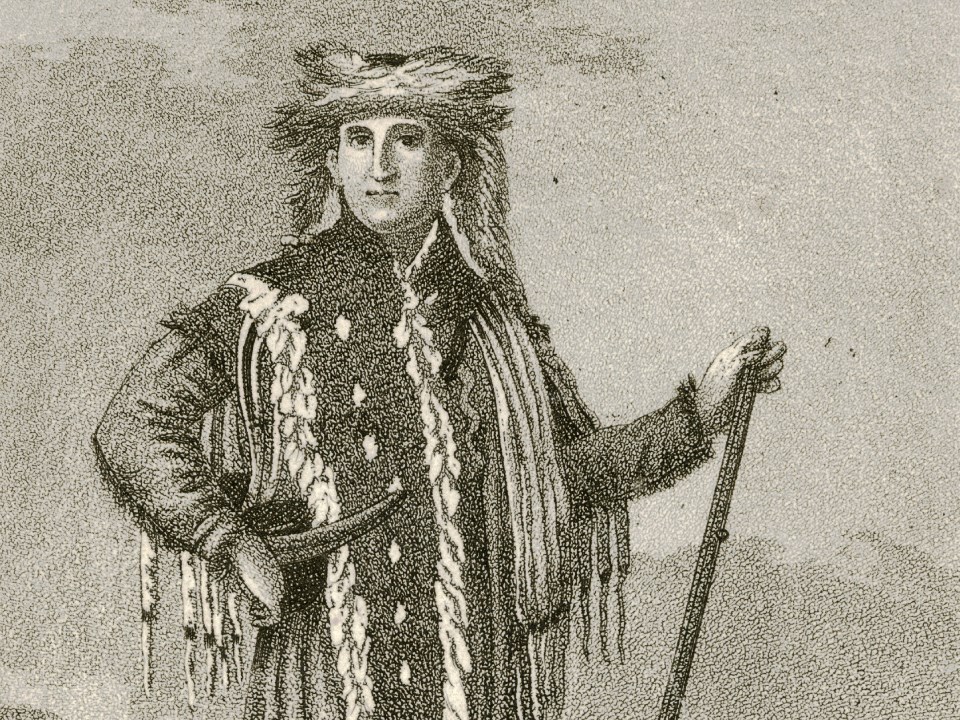Last updated: July 31, 2023
Article
Meriwether Lewis Shot in the Buttocks

Missouri Historical Society.
Meriwether Lewis had many “close calls” throughout the Lewis and Clark Expedition. There was the day in May 1804, not far from St. Louis, when he started sliding down a steep cliff face and saved himself with his long-bladed knife. How about the time he nearly poisoned himself tasting mineral samples? Or that day near the Great Falls of the Missouri when he realized he forgot to reload his rifle – about a milli-second after a huge grizzly started charging toward him.
The final near-disaster came on Monday, August 11, 1806, when Lewis took the near-sighted Pierre Cruzatte elk hunting on a willowy island in the middle of the Missouri near the confluence of the Yellowstone and the Missouri (just west of today’s Williston, North Dakota). It would be a painful lesson for the captain.
According to Lewis’ journal, they both fired upon some elk, killing one and injuring another. Both men took different routes to track the wounded animal and Lewis was just about to re-fire when “a ball struck my left thye about an inch below my hip joint.”
Cruzatte denied he shot the captain. Even though Lewis was pretty sure Cruzatte fired the shot, he also considered it could have been from unseen Indians. In pain and bleeding, Lewis stumbled back to the boats and ordered the men to follow him into the willows to find the Native attackers and save Cruzatte.
Lewis soon collapsed and waited for about 20 minutes until the men returned with Cruzatte in tow; they reported seeing no sign of Indians.
Soon it became obvious what had happened. According to Lewis’ journal entry: “the ball lodged in my breeches which I knew to be the ball of the short rifles such as that he [Cruzatte] had… .” Patrick Gass assisted Lewis with treating the entrance and exit wounds by stuffing the holes with lint. Because he was in a great deal of pain, Lewis could do nothing but lie on his stomach as the Corps continued down the Missouri. He would be able to stand and walk briefing again about 10 days later.
Lewis was once again very lucky. He could have died quickly, if the bullet had clipped an artery. He could have died a slow, agonizing death, if the ball had shattered his hip joint. Or he could have been crippled for life, if the shot would have severed the sciatic nerve.
The lesson he learned that day? Don’t go hunting in thick willows with a person who can’t see much beyond the end of his rifle, especially when you’re wearing buckskin clothing.
